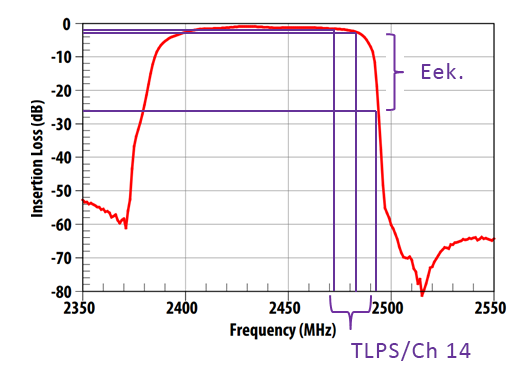Disclosure
We are short shares of GSAT. Please click here to read full disclosures.

This graph illustrates the impact that the filters inside many mobile devices have on Channel 14 signals: dramatic degradation. These filters are tiny devices that transform radio signals by allowing certain frequencies through but suppressing others. The y axis measures the attenuation, or suppression, of the signal. A more negative figure in decibels corresponds to a more attenuated signal. The x axis measures the frequency of the signal. At the high-frequency edge of Channel 14, the attenuation would be approximately 25 decibels — a reduction in signal strength of more than 300 times.
Source: Avago Technologies ACFF-1024 data sheet (p. 3), Kerrisdale analysis
Note: purple lines and label added to Avago graph to highlight the level of typical insertion loss at the edges and center of a hypothetical 802.11n Channel 14 (2474-2494 MHz).
One of the key purported advantages of Globalstar’s (NYSEMKT:GSAT) Terrestrial Low Power Service (TLPS) is the existence of a large number of 2.4GHz Wi-Fi devices that, according to Globalstar, have the technical ability to transmit on its channel but are prevented from doing so via firmware. As Globalstar wrote in its initial petition to the FCC (p. 3)…



